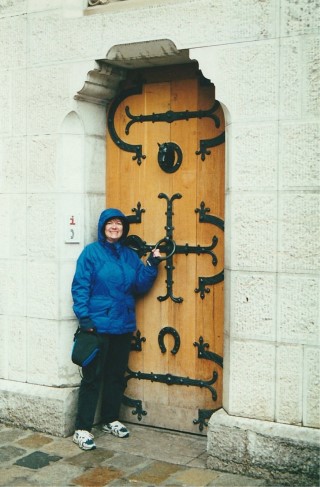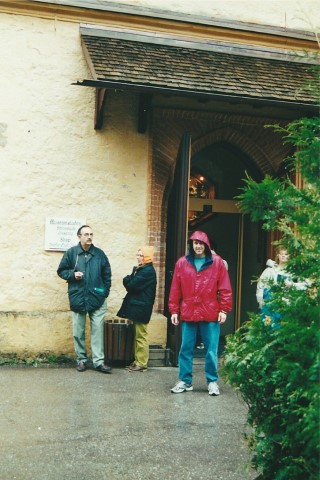|
What does it mean to Travel Lite and Travel Smart?
For the independent do-it-yourself traveler, or actually for any traveler, Traveling Lite "IS" traveling smart.
In general, with few exceptions, Traveling Lite means that you only bring what you absolutely need and will use during your trip and Traveling Smart means that you bring the right types of items on your trip. But traveling smart is much more involved than just bringing the right types of items on your trip. Below we go through a few examples and encourage you to read our other Tips & Tricks pages dedicated to Smart Tra
Looking back, my obsession with Traveling Lite goes back to my first jobs out of college. I worked for American Airlines and then United Airlines as a software developer. As an airline employee, I used to fly standby. I would have to wait around the counter for the agents to hopefully call my name to board the plane after all the paying passengers had boarded. Flying standby, I would never check a bag. I would only have a small carryon bag as it was not guaranteed I would actually get on the flight. As an employee, if I did not make the flight and didn’t check a bag, I could look for alternatives. I could even change my destination by simply writing a new one on my employee travel pass. From my years of standby travel, it primed me for Traveling Lite as a paying passenger on future trips.
Here is a simple example of lite and smart travel and something that you may have not thought much about. Most people you see will probably be wearing jeans, but are they the best choice? (Yes, we fell into the jean wearing tourist group years ago when we first started traveling) The typical traveler may wear one pair of jeans and bring a couple extra pairs in their bag. Jeans are heavy and bulky and can take up a considerable amount of room in your backpack. Backpack space if valuable and do you really want to carry around the extra weight? On top of that, if your jeans get wet, they can take forever to dry. The smart traveler thinks more like a backpacker, wearing and bringing clothing that is lighter weight, moisture wicking, packable and quick drying.
Traveling Lite and Smart may require a mindset change and it is definitely a learning process. When you return from a trip, take time to review how you traveled. Think about what you brought, your experiences and what you may do different to be more efficient on a future trip. It’s a never-ending process. Even after years of travel, we still make adjustments for future trips. We may upgrade our backpacks or as technology evolves, bring different devices that we did not bring on previous trips. For example, we used to travel with a large camera, multiple lenses, and several rolls of film. Now, everything is digital. We have a smaller camera and only need to bring a small plug adaptor and cable for charging phones and camera batteries.
To give another example of how our travel has evolved, on our first trip to Europe years ago, we had a large suite case that we checked in on our flights to and from Europe. We were also wearing jeans and running shoes but had rain jackets and a small travel umbrella. One day, we had a very rainy day and our jeans and shoes got soaked while visiting some castles in Germany. It was after this experience that we began thinking seriously about how to adjust and become smarter travelers. We wanted to be better prepared for any situation we may encounter.
 |
 |
 |
 |
|
In the
Rain |
|
Neuschwanstein & Hohenschwangau
Castles - Fusson, Germany |
On our next trip, we ditched the large suitcase and purchased individual suitcases, smaller so they could be carried on our flight without having to check them. These suitcases had telescoping handles and wheels so they could easily be pulled along. They could also be worn as a backpack but were not that comfortable. These packs were heavier than actual backpacks, hard sided so more difficult to store in crowded airline overhead compartments and they looked like you were walking around with a piece of luggage strapped to your back.
We eventually moved to actual lightweight soft sided backpacks which are still the style we prefer to use today. As we made more trips, we ditched the jeans in favor of convertible hiking style pants that could be worn as long pants or as shorts. We also switched to low rise hiking shoes made with Gortex as they are waterproof, breathable and every comfortable. These are just a few of the changes we have made over the years. There are many more that contribute to smart travel.
To help you Travel Lite and to know how much room you have available for packing, consider a soft sided backpack no larger than 40L as this is the about the largest size that will meet airline size restrictions for carryon baggage. The reason for a soft sided bag compared to rigid bag is basically that it can more easily be squished to fit into tight places where rigid bags may not. (We also think a soft sided pack is much more comfortable to wear) If addition to this, you should also include a small compressible daypack. These packs are extremely lite weight and can be rolled up and carried inside your 40L pack as they take up little room. We bring one that is about 20L in size to use as our daypack while out exploring.
Now that you have your 40L pack, you must decide what to bring and how to pack. Even on a 2-3 week trip, that’s all the room you get, so you have to be smart about what goes in it.
Can you wear a pair of pants for 3-4 days or more? Must you wear a new pair of pants every day? If you wear one pair of pants and bring 2 extra, wearing each pair for 4 days, that’s enough for a 12 day trip. If you add one more day to each pair, you have two weeks covered. How many shirts do you need? On an extended multi-week trip, consider doing laundry in your hotel mid-trip. This will get you clean clothes and solve the problem of bringing along several extra items of clothing. Doing a load of laundry may also enhance your travel experience as you figure out how to do laundry in a foreign land. You may also have the opportunity to interact with locals along the way.
Smart Travel also involves being prepared for different situations that may arise. Some things may be common sense while others are learned over time. We have talked about only bringing what you need and will use, but there are exceptions. There are even some things that you may use but may not be worth carrying around for 2 weeks when you only plan on using them for a day or two. Here are some examples. Let’s say you plan to snorkeling for a day or two somewhere and are thinking about bringing along your own personal mask and snorkel. Do you really want to carry those items around with you for two weeks when you could have just rented them for the two days you need them? Why add the weight and take up extra room in your pack for those? On the other hand, there are items we always bring with us that we may never use such as rain gear and a small travel umbrella. Our rain gear consists of shell type rain pants and jacket. These are compressible, small and extremely lite weight and can still be worn if you are out walking around on a cool day or evening. You may not need the umbrella, but if you do, you will be glad you have it. Of course you could purchase an umbrella upon arrival for about a dollar or two, but already having it avoids having to hunt one down if you need it. We actually had this happen on a trip to Paris. When we arrived at the Gare du Nord train station, our hotel was a couple of blocks away and we planned to walk. Exiting the train station, it was pouring rain. We put on our rain gear, got out our umbrellas and were quickly on our way. There was no backtracking trying to find a vendor in the station to purchase umbrellas.
Traveling Smart is an extremely broad topic and there are countless areas to explore. Here we mention only a few examples. In some large cities such as Paris and Rome, at night, there may be dark alleys void of tourists that should be avoided. Stay in the more crowded and popular tourist areas if you do not feel comfortable. There are however other locations where it’s completely safe to venture out alone at night and explore. In fact, if you don’t do it, you will miss out on some amazing experiences. Venice is known for small alleyways that lead to who knows were and they are a lot of fun to explore. You don’t want to miss walking the medieval wall late at night in Rothenburg Germany. It comes down to your location and researching when and where it’s safe to go.
When on crowded public transportation, you must be extremely aware of pick pockets and thieves after your valuables. Using a little common sense and being smart will make you less of a target. Don’t take this lightly as it could ruin your entire trip if something happens, and you lose your valuables. No wallets or other valuables in the back pockets of your pants. Wear a money belt securely tucked into the front of your pants under your shirt. Some cargo pants have zipped side pockets with a Velcro flap that makes them extremely hard to get in to. When using public transportation with another traveler, stand facing each other and keep an eye on each other. Don’t get distracted by sites or other outside activities. Stay focused on each other. Wear your small daypack in font, not on your back while on a crowded bus or subway. Be wary of nice locals who want to help you when you look confused. Some of our other pages talk about common scams that you may encounter. In fact, we have encountered some of these ourselves and recognized what was going on.
Smart Travel is not only about what you do during your trip, but about how you plan your trip. You don’t have to plan every last detail of your trip, as some of the best experiences come from unplanned activities. The more you plan and work out the details ahead of time, especially major items such as transportation and accommodations, the better your travel experience may be.
These are just a few examples, so be sure to review our other Travel Skills Tips & Tricks pages for more in-depth details on Travelling Lite & Smart.
|